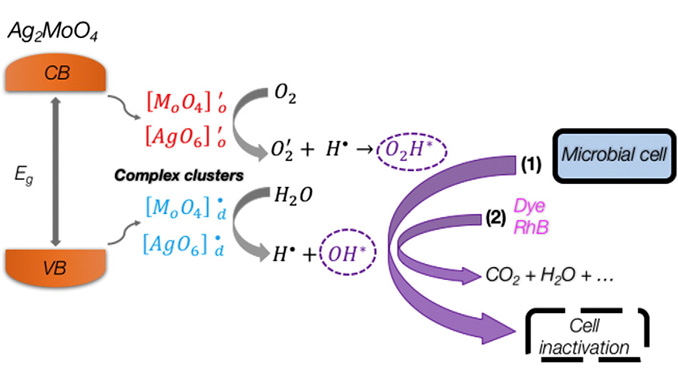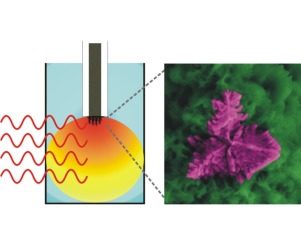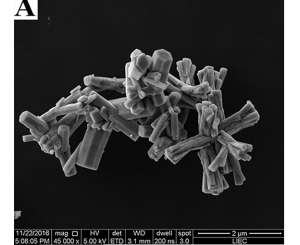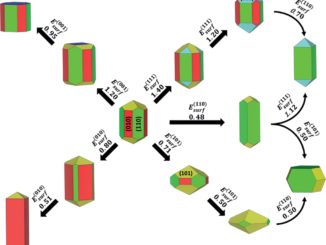
Writers: Cibele A. Oliveira and Diogo P. Volanti and André E. Nogueira and Camila A. Zamperini and Carlos E. Vergani and Elson Longo
Keywords: Silver molybdate; Photodegradation; Antibacterial; Multifunctional; Crystal growth
Abstract: This paper describes the beta silver molybdate (β-Ag2MoO4) samples with spinel-type cubic structures synthesized with various morphologies, including round tips coral-like, elongated coral-like and truncated cube, by the microwave-assisted solvo-/hydrothermal method. The crystal morphologies could be controlled by adjusting the solvent, surfactant, and pH of the precursor solution. X-ray diffraction, field-emission scanning electron microscopy, Fourier-transform Raman spectroscopy, and diffuse reflectance spectroscopy in the ultraviolet-visible (UV–Vis) region, were used to characterize the structures of the samples. The specific surface area was determined using the Brunauer–Emmett–Teller method. Furthermore, the photocatalytic/antibacterial properties of the particles were dependent on the β-Ag2MoO4 crystal morphogy and were evaluated by Rhodamine B dye photodegradation under UV–Vis light, and by determining their minimum inhibitory and bactericidal concentrations, using a broth microdilution assay for Escherichia coli bacteria.




